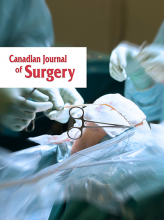We thank Drs. Byrick and Pitt for their thoughtful letter regarding our recent publication on the topic of propofol administration by nonanesthesiologists in endoscopy. We hope to address a number of excellent discussion points they have brought forward.
In our systematic review and meta-analysis, we searched for studies that compared patient outcomes during endoscopic procedures when propofol was administered by anesthesiologists versus endoscopists. With the intent of capturing a broad population, our inclusion criteria were not restricted to procedures performed inside or outside of hospitals. Despite our initial intent, only one of five studies included patients who received endoscopies outside of a hospital facility,1 therefore our conclusions are not easily generalizable across settings. It should be noted that we identified very low airway intervention rates, which speaks to the fact that propofol is generally a safe sedative agent, particularly in patients with low comorbidities (i.e., American Society of Anesthesiologists score of I or II). The need for an airway intervention during sedation should not be primarily affected by the facility in which the endoscopy took place, but rather by the patient’s comorbidities, the nature of the procedure and the person administering the sedation. For this reason, it is essential that patients who may require advanced anesthetic expertise are identified with the use of validated screening tools. We agree that it is of paramount importance that all facilities, whether inside or outside of hospitals, adhere to local standards of patient safety.
One of the challenges of systematic reviews is the lack of uniform reporting across studies. In the studies included in our review, standards of care were not clearly outlined. Having included studies from various countries, we expect that there were substantial differences in such standards. As described in our table of included studies, one key standard was whether or not the intervention group had a dedicated health care professional in charge of administering sedation and monitoring the patient’s cardiorespiratory status throughout the procedure. This was the case in all but one study.1 Having such a dedicated individual would align with the recommendations established by the College of Physicians and Surgeons of Ontario.2
A new sedation model in which endoscopists provide sedation during endoscopy would require an extensive implementation strategy. First, input from relevant stakeholders needs to be taken into consideration. For instance, a barrier might be the lack of endoscopist buy-in without appropriate incentives. Endoscopists would be required to undertake additional training on managing cardiorespiratory complications. There would also be an increased demand for allied health professionals (i.e., anesthesia assistants, registered nurses) with advanced life support training. A curriculum for health care professionals to be involved with sedation has already been established by the European Society for Gastrointestinal Endoscopy, which could provide a foundation on the implementation of endoscopist-administered propofol.3 Countries like Canada could also learn from and improve upon the experiences of some European countries where the task of propofol sedation has largely shifted to the endoscopist. 4,5
As with any new health system arrangement, there must be an ongoing audit of patient outcomes and worker satisfaction. The costs of such implementation (i.e., education and training, reallocation of health care professionals) need to be weighed against the benefits (i.e., improved access to propofol sedation). Our systematic review serves to highlight that there is low-quality evidence that endoscopists may safely administer propofol to a carefully selected patient population.
Footnotes
Competing interests: None declared.






